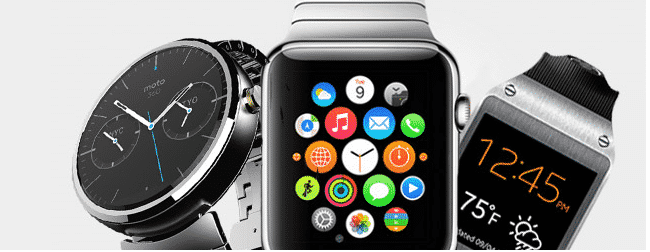The smartwatch dilemma: Spoiled for choice
Smartwatches are wearable devices designed to resemble wristwatches. However, smartwatches perform a vast number functions which go beyond telling the time. They give users the ability to perform several tasks from the comfort of their wrists.
Today, smartwatches have become quite common. In 2018, over 72 million of these devices were shipped globally. According to predictions, this number will increase to over 121 million in 2022, around 25 million more than predicted 2021 figures, and accounting for around 63 percent of the entire wearable device market.
Due to how commonplace smartwatches have become in our everyday lives, many major manufacturers have introduced their own versions, flooding the market with a number of different brands. This leaves individuals who wish to acquire the device spoiled for choice.
How to Choose the Right Smartwatch
All smartwatches vary in physical structure and internal function. This can be attributed to the heavy saturation of the market by manufacturers, which in turn leaves a myriad of options available for the individual consumer to choose from. Many major manufacturers produce smartwatches that can be used alongside other smart devices. But the choice of which of the many smartwatches to purchase can prove to be more daunting than satisfying.

A selection of smartwatches. Source
Keeping this in mind, it’s important to weigh the key attributes of desired smartwatches before committing to a purchase.
Here are a some factors to consider when shopping for a smartwatch:
- Device compatibility: Although stand-alone smartwatches are available on the market, many smartwatches must be paired with other smart devices – predominantly smartphones – in order to function properly. Apple watches, for example, can only pair with Apple phones (iPhones). Samsung smartwatches are a bit more flexible and can be paired with devices other than Samsung products. Some ‘special’ features on a Samsung smartwatch, however, can only be used in conjunction with a Samsung device. Thus, it important that device compatibility be checked before a smartwatch is purchased to avoid a wasteful purchase.
- Cost: The cost of a smartwatch is usually one of the main factors considered while shopping for a smartwatch. Prices are usually determined by two main factors – the brand and the features. Smartwatch devices created by older, major manufacturers are often heftier priced than watches from newer, fresher companies. This can be attributed to the fact that older technological companies are perceived to be more reliable. However, you can certainly find value in newer, less expensive brands.
- Battery life: Battery life is easily one of the most important factors to consider when shopping for a smartwatch. Smartwatches are designed to be used on-the-go, and so a weak or underperforming battery could easily mar the overall experience of the device. It is essential that buyers double- or even triple-check the capabilities of their smartwatch batteries at purchase point. Besides the battery output, individuals interested in purchasing a smartwatch must also take into consideration the speed of charging. If your device takes too long to charge, it could be as much an inconvenience as poor battery life.
- Application compatibility: A myriad of smartwatches are built to allow certain applications function on their interface. These applications are specifically enabled to function on the device’s interface. Besides the built-in apps available on the smartwatch, finding out what applications can function in conjunction with its interface is of equal importance.
- Alerts and notifications: Alerts and notifications are one of the main reasons smartwatches are purchased. Many individuals want to be able to keep tabs on their activities even when they are far from their smartphones. Many smartwatches allow users to receive alerts from social media applications such as Facebook Messenger, and even allow phone calls. Checking which alerts are compatible with the device is therefore important.
- Extra features: The saturated smartwatch market invariably leads to the myriad of available extra features on smartwatch devices themselves. The most popular features include heart rate monitors and Global Positioning System (GPS). While these features surely enhance the experience of smartwatches, they shouldn’t be placed over device functionality.
- Overall aesthetic appearance: The aesthetics of a smartwatch can be one of the most enticing features when making a decision to purchase. However, while shopping for a smartwatch, it’s best to remain guided by functionality.
Final Words
Shopping for a smartwatch isn’t as straightforward as it seems. In order to choose one among the many devices in such a saturated market, a number of factors should be considered. These factors are all about functionality and are based on what the individual consumer finds to be important, as well as the purpose of the smartwatch.
Source